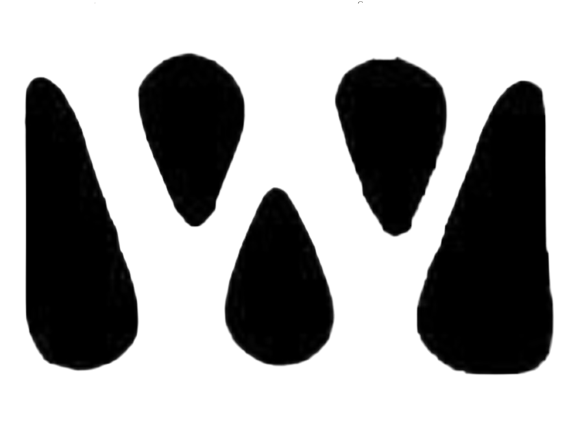Texas Neighbors Magazine
English Gardens… with a texas twang! LET RANDY AND SUE WESTON GUIDE YOU IN USING NATIVE TEXAS PLANTS IN AN ENGLISH-STYLE GARDEN… by lana robinson, field editor
The following is a reproduction of the article which appeared in Texas Neighbors, published quarterly by the Texas Farm Bureau, March/April 2000, about Weston Gardens.
About a decade ago, Randy and Sue Weston, owners of Weston Gardens in Bloom, Inc., a nursery and residential/commercial landscape service in Fort Worth, hit upon the idea of creating extraordinary English-style gardens using native Texas flora and acclimated plants. And it turned out to be a good one.
“We knew we couldn’t compete with the chains unless we offered something totally different. It made a lot more sense to sell plants that want to grow here instead of plants that struggle. That’s how we got started with perennials and our ‘Texas Tough’ natives,” Randy Weston recalls.
To showcase their botanical wares, the husband-and-wife team designed a series of daring demonstration gardens on 10 acres adjacent to their nursery business. Together, they transformed the neglected grounds of an old estate – blessed with a meandering creek, shallow pools, grottos, stone outcroppings, and the remains of several rock fences and structures – into a breathtaking preserve. By integrating their hardy natives into natural patches with remnants of exotic vegetation established on the property in the 1920s and 1930s, the Westons created a refreshing “walk on the wild side” for all who venture here.
Among the plants enduring on the property all those years were South Texas transplants – retama (Jerusalem thorn), hummingbird bush, and Turk’s-cap, along with yaupon hollies from East Texas. Also among the original plantings were three jujube trees, some conifers and Eastern red cedars, and a row of red crape myrtles. Other survivors were arborvitae and assorted shrubs, three groundcovers – vinca major, coralberry, and honeysuckle – and several gigantic button bushes on the creek banks.
“To have survived all these years, the plants were native, or as good as native, in terms of their adaptability,” Randy Weston notes.
This restored, historical garden, known as the “Westonian,” is open daily for self-guided tours. The couple also hosts events at Easter, Mother’s Day, and on other occasions to lure people out to view their handiwork and enjoy the wonders of nature. Frequent workshops and seminars are conducted here as well, to show customers how to create an English-style garden using the Weston’s wild and wonderful plants.
Fundamental to the English layout is a sense of enclosure, the Westons insist. It can be accomplished with shrubs, partitions of old brick or stone, or fences. Instead of formal hedges, the Fort Worth landscapers fashion buffers of junipers, holly, arborvitae, and Chinese photinia. Another option for achieving the desired effect, they say, is to plan the garden around a tree with sheltering branches.
Pinpointing areas of sunlight and shade within the intended space are a prerequisite. You don’t always have to start from scratch. You may be able to salvage some of the existing plants or other elements.
The Westons concentrate on mixed borders, with different layers, textures, and sizes of plants, to give gardens a British accent.
“Beyond their propensity for sun or shade, plants should be grouped according to water and cultural requirements and root competition. Bloom times are also important. Pick the right plants and you can design a garden that looks good all year long.”
Flame acanthus, wood fern, pink skullcap, rock rose, autumn sage, Texas lantana, and Turk’s-cap are especially heat-tolerant. Also on the Weston’s heat-beaters list are two native shade tees, the chinkapin (chinquapin) oak and Eastern red cedar; two shrubby plants, sumac and American beautyberry; three groundcovers or vines – coral honeysuckle, cross vine, and pigeonberry; and two ornamental grasses, Lindheimer’s muhly and inland sea oats.
Weston Gardens in Bloom, Inc. sells over 50 different ornamental grass varieties, which, planted in clumps or worked into the border, carries the garden to yet another dimension. Randy Weston often plants tufts of shorter grasses, such as inland sea oats, autumn blush muhly, and black fountain grass among his flowering plants.
Hardy Texas native trees recommended by the Westons include the Mexican plum, smoke tree, Texas kidneywood and possumhaw holly. Chaste tree, with its fragrant foliage and lovely blue blooms, and the crape myrtle are favored ornamentals.
Texans have many choices when it comes to greenery – liriope, mondo grass, germander, creeping thymes, strawberry geranium, calylophus and similar flowering groundcovers, and “Moonbeam” coreopsis.
Sue Weston advocates antique variety, bush-type roses, such as Petite Pink Scotch, Duchesse de Brabant, and sweet-smelling Mutabilis, for low-maintenance, non-stop blooms. Favored climbers include Lady Banks, Old Blush, Cecile Brunner, and Seven Sisters.
Many of the Weston’s plantings are aimed at luring hummingbirds, bees, and butterflies.
“We have handouts at the nursery that anybody can pick up that show you how to create a hummingbird garden or a butterfly garden. It tells you the best plants for shade and sun,” Sue Weston notes.
The Weston’s top 20 picks for full sun include: flame anisacanthus, Texas Aster, Powis Castle artemisia, black-eyed Susan, butterfly bush, calylophus, “moonbeam” coreopsis, purple coneflower, oxeye daisy, gaura, upright germander, rock rose, autumn sage, Russian sage, sedum, Veronica, wild petunia, winecup, yarrow, and Texas lantana.
Twenty shade-loving perennials recommended by the Westons include: cast iron plant, Texas columbine, coral bells, strawberry geranium, hosta, inland sea oats, iris, oxalis, woodland phlox, pigeonberry, rain lily, lyre leaf sage, Turk’s-cap – a supper hummingbird attractor – wild petunia, wood violet, and zexmenia; also, wood, holly, tassel and Japanese painted ferns.
